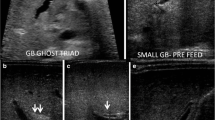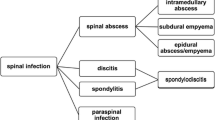Abstract
Milk of calcium is a viscous colloidal suspension of calcium carbonate, calcium phosphate, or calcium oxalate, or a mixture of these compounds. The calcific material gravitates to the dependent portion of a cystic cavity. Crescent- or hemisphere-shaped calcium density with a sharp horizontal upper border at the milk of calcium-clear fluid interface confirms the diagnosis. Bilateral milk of calcium in the renal pelvis or in dilated calyces is very rare and has not been reported in patients with spinal cord injury. A 63-year-old male patient with T-10 paraplegia presented with recurrent urinary tract infections. X-ray of the kidneys, taken with the vertical beam while the patient lay supine, revealed a poorly defined opacity overlying the lower pole of the right kidney. Findings on ultrasonography of the kidneys were interpreted as a large, staghorn-type calculus in the dilated lower pole calyx of the right kidney. Because x-ray of the kidneys showed a poorly defined opacity overlying the lower pole of the right kidney, milk of calcium was suspected, and computed tomography (CT) of the kidneys was performed. Calcific debris with horizontal layering in the lower pole calyces of both kidneys was seen; this confirmed the diagnosis of milk of calcium. A 62-year-old female patient with C-7 tetraplegia underwent ileal conduit urinary diversion. Subsequently, she developed calculi in the right kidney, which were treated with shock wave lithotripsy. Follow-up x-ray revealed faintly opaque shadows with indistinct margins in the region of both kidneys. Intravenous urography showed cortical thinning at the upper poles and blunting of the calyces, suggestive of chronic pyelonephritis. The right renal pelvis was bulky, and bilateral renal calculi were diagnosed during ultrasonography; however, the presence of faintly radio-opaque shadows with indistinct margins raised suspicions of renal milk of calcium. A CT scan of the kidneys, which was performed in the supine and subsequently in the prone position, revealed gravity-dependent layering of calcific material in the pelves of both kidneys and in the midpole calyces of the right kidney, thus confirming the diagnosis of milk of calcium. In conclusion, CT scan of the kidneys confirmed the diagnosis of bilateral renal milk of calcium, a very rare entity in patients with spinal cord injury. Awareness of typical and unique features of milk of calcium during imaging enables physicians to recognize renal milk of calcium and to differentiate it from nephrolithiasis, thereby avoiding unwarranted interventions such as shock wave lithotripsy or endoscopic procedures.
Similar content being viewed by others
References
Patriquin H, Lafortune M, Filiatrault D. Urinary milk of calcium in children and adults: use of gravity-dependent sonography.AJR Am J Roentgenol. 1985; 144: 407–413.
Herman RD, Leoni JV, Matthews GR. Renal milk of calcium associated with hydronephrosis.AJR Am J Roentgenol. 1978; 130: 572–574.
McCorkell SJ, Hefty TR, Dowling AD. Bilateral milk-of-calcium urine and hydronephrosis.J Urol. 1985; 133: 77–78.
Biyani CS, Bhatia V. Renal milk of calcium: review of the literature and report of 5 cases.Urol Int. 1993; 51: 171–176.
Murray RL. Milk of calcium in the kidney: diagnostic features of vertical beam roentgenograms.Am J Roentgenol Radium Ther Nucl Med. 1971; 113: 455–459.
Yeh H-C, Mitty HA, Halton K, Shapiro R, Rabinowitz JG. Milk of calcium in renal cysts: new sonographic features.J Ultrasound Med. 1992; 11: 195–203.
Yashiro N, Yoshida H, Araki T. Bilateral “milk of calcium” renal cysts: CT findings.J Comput Assist Tomogr. 1985; 9: 199–200.
Heidenreich A, Vorreuther R, Krug B, Moul JW, Engelmann UH. Renal milk of calcium: contraindication to extracorporeal shockwave lithotripsy.Technique Urol. 1996; 2: 102–107.
Melekos MD, Kosti PN, Zarakovitis IE, Dimopoulos PA. Milk of calcium cysts masquerading as renal calculi.Eur J Radiol. 1998; 28: 62–66.
Vandeursen H, Barret L. An intrarenal opacity resisting extracorporeal shock wave lithotripsy.J Urol. 1990; 144: 961–962.
Author information
Authors and Affiliations
Rights and permissions
About this article
Cite this article
Vaidyanathan, S., Hughes, P.L. & Soni, B.M. Bilateral renal milk of calcium masquerading as nephrolithiasis in patients with spinal cord injury. Adv Therapy 24, 533–544 (2007). https://doi.org/10.1007/BF02848776
Issue Date:
DOI: https://doi.org/10.1007/BF02848776




